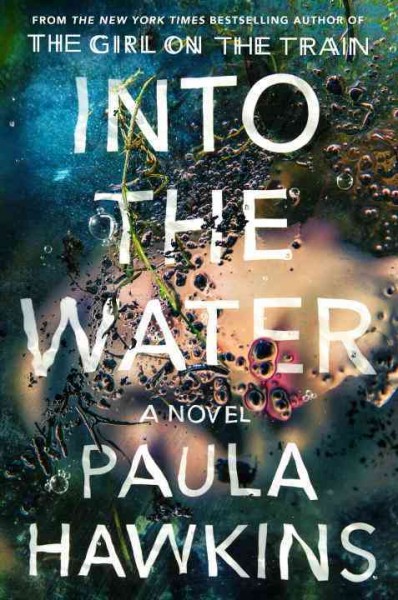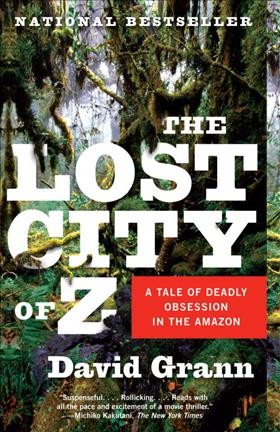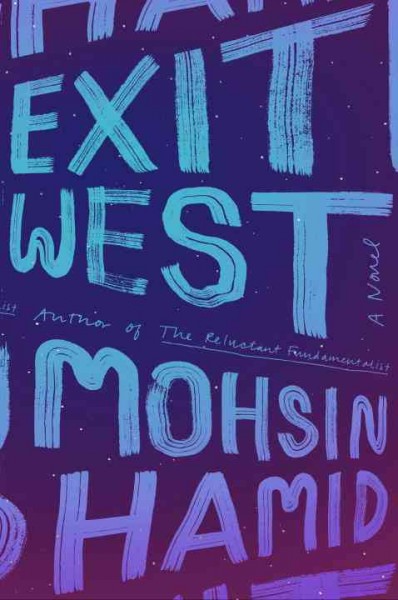So, I’m not sure why, but I have not been able to get enough poetry as of late. I feel like I spend most days at work figuring out which book of poetry I’ll read next. Now mind you, I don’t like flowery poetry that I have to turn my brain inside out attempting to figure out what the string of words mean when put all together. I like it to be right out there in front of me, screaming.
 All of that is to say I am reading A LOT of poetry right now. However, in my mind, one collection of poems currently shines above the rest. Sharon Olds won the Pulitzer with her 2012 collection, Stag’s Leap. Her newest collection is entitled Odes. Olds uses this old form of a poem to celebrate all parts of herself and female sexuality. I can’t stress enough how excited I was to get home every night and read some of these poems. I could have plowed through the book in one sitting, but I opted to savor every single one, only allowing myself–at most–five poems at a time. The subject matter of the poems ranges from the purely sexual to the everyday mundane: “Blow Job Ode”, “Ode to the Clitoris,” “Hip Replacement Ode,” “My Mother’s Flashlight Ode,” “Real Estate Ode,” & “Ode to the Last Thirty-Eight Trees in New York City Visible from This Window”. The imagery conjured by these poems is at once brilliant and so obvious, at least once Olds has put it in front of you. Many times I found myself asking in my mind “Why haven’t I ever thought of that before?” These are beautiful and brilliant in their simplicity. Get in this mix guys.
All of that is to say I am reading A LOT of poetry right now. However, in my mind, one collection of poems currently shines above the rest. Sharon Olds won the Pulitzer with her 2012 collection, Stag’s Leap. Her newest collection is entitled Odes. Olds uses this old form of a poem to celebrate all parts of herself and female sexuality. I can’t stress enough how excited I was to get home every night and read some of these poems. I could have plowed through the book in one sitting, but I opted to savor every single one, only allowing myself–at most–five poems at a time. The subject matter of the poems ranges from the purely sexual to the everyday mundane: “Blow Job Ode”, “Ode to the Clitoris,” “Hip Replacement Ode,” “My Mother’s Flashlight Ode,” “Real Estate Ode,” & “Ode to the Last Thirty-Eight Trees in New York City Visible from This Window”. The imagery conjured by these poems is at once brilliant and so obvious, at least once Olds has put it in front of you. Many times I found myself asking in my mind “Why haven’t I ever thought of that before?” These are beautiful and brilliant in their simplicity. Get in this mix guys.
hankies with a pastoral scene in one corner.
There was a lot we were not allowed to do,
but what we were allowed to do was ours,
dolls you carry by the leg, and dolls’
clothes you would put on , or take off–
someone who was yours, who did not
have the rights of her own nakedness,
and who had a smooth body, with its
untouchable place, which you would never touch, even on her,
dimples, and though you were not supposed to, you could
bite off the ends of the fingers when you could not stand it.
And though you’d never be allowed to, say, drive a bus,
or do anything that had to be done right, there was a
teeny carton, in you, of eggs
so minute they were invisible.
And there you would be milk, in you, too–real
milk! And you could wear a skirt, you could
be a bellflower–up under its
cone the complex shape like a closed
buckle, intricate groove and tongue,
where something like God’s power over you lived. And it turned out
you shared some things with boys–
the alphabet was not just theirs–
and you could make forays over into their territory,
you could have what you could have because it was yours,
and a little of what was theirs, because
you took it. Much later, you’d have to give things
up, too, to make it fair–long
hair, skirts, even breasts, a pair
of raspberry-colored pumps which a friend
wanted to put on, if they would fit his foot, and they did.




 By Katie Magee
By Katie Magee When Nel Abbott jumps to her death in the river, she leaves behind her teenage daughter. Nel’s sister, Jules, comes to take care of her, returning to a town she was desperate to run away from. But this isn’t the first person to turn up dead in the water. The river has claimed the lives of several women over the years, and most recently, a teenage girl. However, not everyone is mourning the death of Nel, who was writing a book about the river’s past and dredging up memories the town would rather put to rest. Was someone desperate enough to keep secrets hidden…that they pushed her? Or is there something more sinister in the water that draws these women in?
When Nel Abbott jumps to her death in the river, she leaves behind her teenage daughter. Nel’s sister, Jules, comes to take care of her, returning to a town she was desperate to run away from. But this isn’t the first person to turn up dead in the water. The river has claimed the lives of several women over the years, and most recently, a teenage girl. However, not everyone is mourning the death of Nel, who was writing a book about the river’s past and dredging up memories the town would rather put to rest. Was someone desperate enough to keep secrets hidden…that they pushed her? Or is there something more sinister in the water that draws these women in? If the characters don’t draw you in, the setting certainly does. The small town trying to ignore its own tragic past (which involves drowning accused witches) sets a creepy tone for the story. I liked how Hawkins includes excerpts from Nel Abbott’s unpublished book about the girls who died in the river. It really added to the idea of the river being a character in the story and kept me wondering what was behind these suicides.
If the characters don’t draw you in, the setting certainly does. The small town trying to ignore its own tragic past (which involves drowning accused witches) sets a creepy tone for the story. I liked how Hawkins includes excerpts from Nel Abbott’s unpublished book about the girls who died in the river. It really added to the idea of the river being a character in the story and kept me wondering what was behind these suicides.
 Most, if not all, of the girls who worked for USRC started getting ill. Some had sore mouths, some had achy joints, some started walking with limps, and some showed all of the symptoms. Several of the women developed deadly sarcomas. Since radium affected each girl differently, the sources of their illness were misdiagnosed. Syphilis, “phossy jaw,” early onset arthritis, etc. were some of the main diagnoses. These “radium girls” were dying left and right, and USRC kept denying that their deaths were work-related. Finally, with the help of sympathetic doctors and committee agents, radium was finally pinpointed as the cause of these deaths and illnesses.
Most, if not all, of the girls who worked for USRC started getting ill. Some had sore mouths, some had achy joints, some started walking with limps, and some showed all of the symptoms. Several of the women developed deadly sarcomas. Since radium affected each girl differently, the sources of their illness were misdiagnosed. Syphilis, “phossy jaw,” early onset arthritis, etc. were some of the main diagnoses. These “radium girls” were dying left and right, and USRC kept denying that their deaths were work-related. Finally, with the help of sympathetic doctors and committee agents, radium was finally pinpointed as the cause of these deaths and illnesses. The story of Omar El Akkad’s
The story of Omar El Akkad’s 
 Jimmy Buffett is at the center of my musical taste, from way back when I was but a tiny child riding in the back seat of my mom’s Camaro. He’s known for his
Jimmy Buffett is at the center of my musical taste, from way back when I was but a tiny child riding in the back seat of my mom’s Camaro. He’s known for his 
 I’ve seen this book lurking around the store since I arrived here two years ago, but only felt compelled to pick it up due to the impending arrival of David Grann, who was here last week to promote his new book, Killers of the Flower Moon. Boy, am I glad I finally discovered The Lost City of Z…well, discovered the book anyway. It tells the captivating tale of Col. Percy Fawcett, a British explorer from the Royal Geographic Society who first comes to South America in search of adventure, and later becomes obsessed with finding a mythical city, representing for Percy the soul of the Amazon itself. This is the most captivating mystery in the jungle I’ve heard about since the television show Lost went off the air. Grann’s book is about obsession, history, geography, and the limits of what humans can ever empirically know. I cannot recommend this book highly enough.
I’ve seen this book lurking around the store since I arrived here two years ago, but only felt compelled to pick it up due to the impending arrival of David Grann, who was here last week to promote his new book, Killers of the Flower Moon. Boy, am I glad I finally discovered The Lost City of Z…well, discovered the book anyway. It tells the captivating tale of Col. Percy Fawcett, a British explorer from the Royal Geographic Society who first comes to South America in search of adventure, and later becomes obsessed with finding a mythical city, representing for Percy the soul of the Amazon itself. This is the most captivating mystery in the jungle I’ve heard about since the television show Lost went off the air. Grann’s book is about obsession, history, geography, and the limits of what humans can ever empirically know. I cannot recommend this book highly enough. The Osage tribe in the late 1800s, like many other native peoples of the Americas, had been confined to smaller and smaller territories as white settlers hungered for their land. After seeing
The Osage tribe in the late 1800s, like many other native peoples of the Americas, had been confined to smaller and smaller territories as white settlers hungered for their land. After seeing 

 This is how the story of Nadia and Saeed begins, in a country teetering on the brink of a civil war. The dangerous country is never named, but it is obvious that it is somewhere in the Middle East. People are living here in constant fear, people are shot on their way to work, and sometimes even in their own homes.
This is how the story of Nadia and Saeed begins, in a country teetering on the brink of a civil war. The dangerous country is never named, but it is obvious that it is somewhere in the Middle East. People are living here in constant fear, people are shot on their way to work, and sometimes even in their own homes.